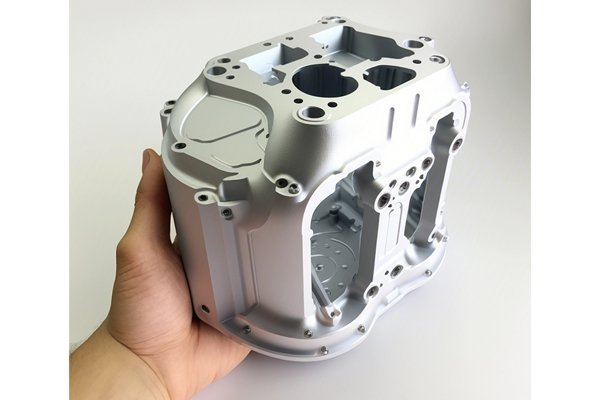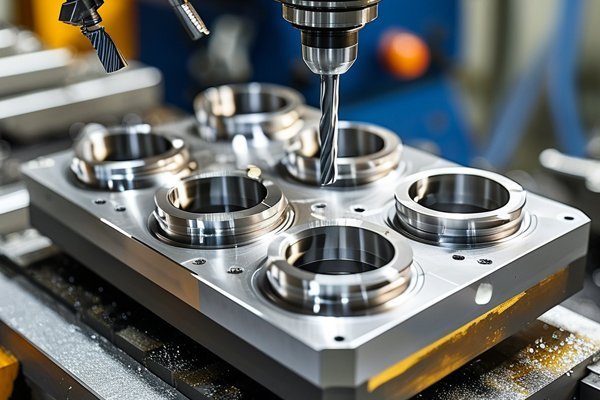Did you know that stainless steel is one of the most commonly used materials in mechanical engineering, accounting for nearly 25% of metal usage in the United States alone? This versatile alloy is prized for its corrosion resistance, durability, and aesthetic appeal, as well as its ability to be machined into precise components. With a growing demand for high-strength applications across various sectors, understanding which stainless steel grade is best suited for CNC (Computer Numerical Control) machining becomes increasingly essential.
In this comprehensive blog, we will uncover the different stainless steel grades, their characteristics, and their suitability for CNC machining. You’ll learn about performance metrics such as tensile strength, hardness, workability, and common applications. By the end, you will be well-equipped to make informed decisions for your specific machining needs.
Understanding Stainless Steel
What is Stainless Steel?
Stainless steel is an alloy made primarily from iron, with a minimum of 10.5% chromium content. This chromium forms a passive layer of chromium oxide on the surface, preventing corrosion and rust. Other elements, such as nickel, molybdenum, and manganese, are often added to enhance specific properties.
Categories of Stainless Steel
Stainless steel is generally categorized into several types based on its microstructure:
Key Considerations for High-Strength Applications
When selecting stainless steel for CNC machining, several factors influence your choice. Understanding these will ensure you select the right type for your application.
Tensile strength is a measure of how much pulling force a material can withstand before breaking. For high-strength applications, select grades that have a higher tensile strength rating.
Hardness affects a material’s resistance to deformation and wear. The right hardness level ensures longer tool life and improved finish quality during machining.
CNC machining needs materials that are relatively easy to work with while still delivering strength. Stainless steels like 304 and 316 possess good workability while maintaining their strength.
High-strength applications often occur in industries like marine, medical, and food production, where corrosion resistance is vital. Grades with higher alloying elements like nickel would perform better in such environments.
Cost considerations are always paramount. Higher-grade materials often come with increased costs, so find a balance that meets your technical and budgetary requirements.
Best Stainless Steel Grades for High-Strength CNC Machining
Now that you understand the key factors to consider, let’s explore some of the best stainless steel grades for high-strength CNC machining:

Machining Stainless Steel: Techniques and Best Practices
Identifying the right stainless steel is only part of the process. Successful machining requires a systematic approach to tool selection, machining strategies, and proper coolant usage.
Tool Selection
When machining high-strength stainless steels, selecting the right tools is critical. Key considerations include:
Machining Techniques
Coolants and Lubricants
Using the right coolant significantly impacts the quality of your machined part. Consider:
Challenges in CNC Machining Stainless Steel
While stainless steel offers numerous benefits, machining it presents unique challenges:
Choosing the right stainless steel grade for CNC machining in high-strength applications requires careful consideration of numerous factors, from tensile strength to workability, cost, and corrosion resistance. The grades highlighted in this blog—such as 316, 304, 410, 2205, and 17-4 PH—have unique characteristics that make them suitable for various high-stressed environments.
In machining, proper tool selection, machining techniques, and coolant selection can maximize your efficiency and the quality of your output. By bearing in mind the challenges of machining stainless steel, one can implement strategies that not only reduce costs but enhance production reliability.
As industries continue to evolve, understanding material properties and machining techniques remains fundamental for engineers and manufacturers striving for excellence and innovation. This blog is an important resource for anyone involved in the design and production of high-strength components, encouraging thoughtful decision-making in material selection that can greatly influence the success of projects.
In today’s competitive landscape, investing time in understanding these parameters ultimately reflects in stronger, safer, and more reliable products. Make these considerations part of your daily operations, and watch your precision machining projects thrive!






